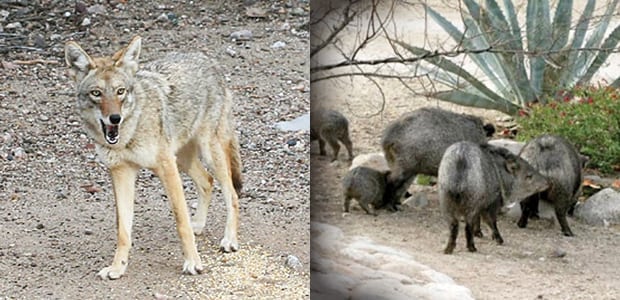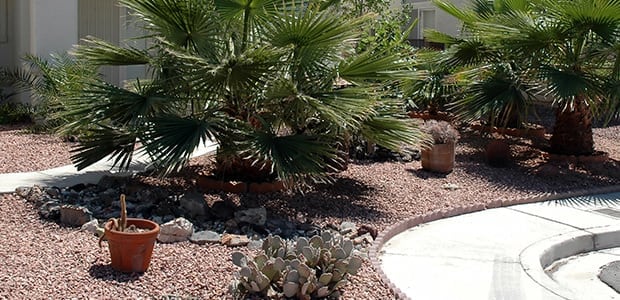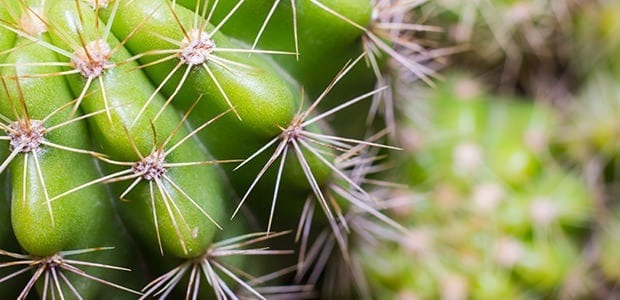Wild animals such as bobcats, coyotes and javelinas are becoming more and more common visitors to Desert Ridge backyards. You’ve likely heard people say, “Wildlife is being pushed out of the desert because of human development… that’s why we’re seeing more of it”. This is a common myth. You might be surprised at the real reason that we are seeing wild animals more frequently in our local neighborhoods.
It is true that because the Desert Ridge Community is surrounded by natural desert and greenways, that wildlife is plentiful. What you might not realize is that we, the human residents, are both the problem and the potential solution to wildlife issues in our own backyards.
Wildlife is content to live on the fringes of human development, but when what we provide is more attractive than the alternative, we are essentially laying out the welcome mat. Animals seek out the same things we do when deciding where to visit or live… basic needs, comfort and safety. In the case of wildlife, this is defined as ample food, water and shelter. Wildlife issues are in fact, a neighborhood and community-wide issue.
Coyotes, javelinas and bobcats have home ranges larger than your cul-de-sac. Yet, each of us has our own threshold of how closely we want to live with wildlife, and we send mixed messages. Are you doing everything you can to discourage coyotes from your backyard, while your neighbor throws table scraps over the fence for wildlife? Is your spouse putting out dishes of food for the neighborhood cats, and javelinas and raccoons are attracted to the leftovers after dark? Maybe you take pictures and quietly observe a family of bobcats lounging by your pool, though you or your neighbors have small dogs—similar in size to their natural prey items—running around in the walled backyard. An 8 foot wall is no obstacle for these skilled predators. Even if you love seeing wildlife in your yard, if you are not making it uncomfortable to be there, you are inadvertently sending a message of welcome.
Every week in Arizona, Game and Fish gets calls from distraught people who have lost pets when a bobcat or coyote found their jackrabbit-sized shih tzu or outdoor cat to be easy prey. A bobcat or coyote that becomes used to humans may be a welcome sight to you, but a problem animal to your neighbor… and eventually may be unceremoniously removed. Licensed companies will remove animals at homeowners’ expense. Arizona Game & Fish generally does not remove animals from neighborhoods unless it is a human (not pet) health or safety issue, and then will usually remove lethally. As you can see, this can quickly become a costly and unfortunate no-win situation for both people and the wildlife we enjoy keeping “wild”.
Animals live their lives based on a risk/reward situation. When the risk is low (human tolerance), and the reward is high (human-provided food or shelter), animals become habituated. Habituation often ends in removal, a no-win situation. When we make the risks high and the rewards low by removing shelter and food sources, wildlife stays wild, and everyone wins.
What Can I Do?
How can you avoid habituating wildlife in the first place? Take a look around your backyard. Are you providing one or more of these for wildlife?
• If you feed birds, is extra seed falling on the ground that attracts birds by day, but javelinas and rodents by night? Rodents alone can cause property damage, but once you have rodents, snakes, bobcats and coyotes often follow.
• Do you have slow irrigation leaks that provide a source of water for anything from rabbits to rattlesnakes? Yes, snakes need water, too—and will prey upon the small mammals attracted to it, as well.
• Do you have overgrown bushes near your patio that provide shade from the desert heat and hiding spots for everything from snakes to javelinas?
• Taking a break from feeding the birds (or feeding smaller amounts), fixing your irrigation pipes, and trimming the bottom few inches of bushes in your yard is a great start, however, urban and suburban wildlife is a systemic neighborhood issue.
• How can you be part of the solution? If you see a coyote in your yard, don’t condone this behavior by ignoring it. This may cause it to lose its natural fear of people, which can eventually lead to aggressive behavior or it to become considered a ‘nuisance animal’.
Arizona Game & Fish recommends that you:
• Make loud noises
• Shout and bang pots and pans or rattle empty soda cans with pennies in it
• Wave your hands or objects like sticks and brooms
• Throw small stones
• Spray the animal with a hose or a super-soaker loaded with a 10% household ammonia solution
• Use pepper spray or bear spray, if necessary, on bold animals that refuse to leave
So, what can you as a responsible homeowner do? Start the conversation with your neighbors and come up with a plan that you can all agree on. Keeping wildlife wild starts with you. And when we keep wildlife wild, everyone wins.








